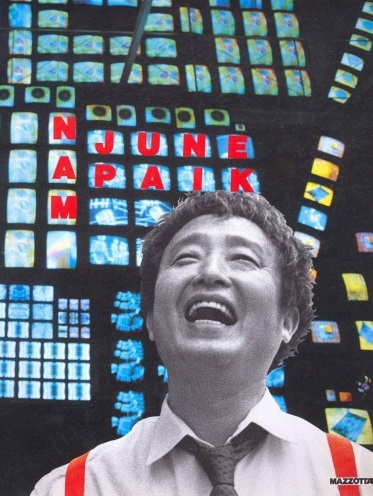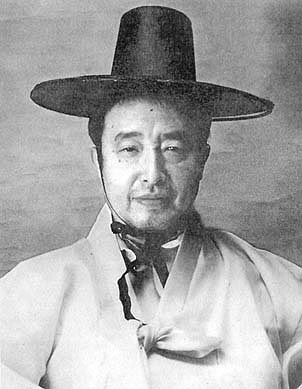ZEN MESTEREK ZEN MASTERS
« Zen főoldal
« vissza a Terebess Online nyitólapjára
Nam June Paik (1932-2006)
(Hangul /
Hanja /
Revised Romanization:) 백남준 / 白南準 / Baek Namjun
(magyaros átírás:) Pek Namdzsun

Exhibition catalogue, Palazzo Reale, Milan, 1994
Zen for...
Tartalom |
Contents |
Nam June Paik [Pek Namdzsun] (PDF), 98-113. oldal
Nam June Paik: «TV-Buddha» 1974; «Fej zen» 1962 Bíró Yvette: Nam June Paik – Az „elektronikus tündér” bűvésze |
Nam June Paik in a traditional Korean dress, 2001 Nam June Paik, «Zen for Street», date unknown Nam June Paik, «Zen for Head», 1962 Nam June Paik, «Zen for TV», 1963 |

Nam June Paik in a traditional Korean dress, 2001
http://www.paikstudios.com/
http://en.wikipedia.org/wiki/Nam_June_Paik
http://www.fondazionebonotto.org/fluxus/paiknamjune.html
http://www.guggenheim.org/new-york/collections/collection-online/artists/bios/422/Nam%20June%20Paik
Nam June Paik, «Zen for Head», 1962
Photography | ©Nam June Paik
http://www.medienkunstnetz.de/works/zen-for-head/Karlheinz Stockhausen invited Paik to make a 7-minute appearance in the performances of his piece 'Originale' ('Originals'), which was first presented in Cologne on 26 October 1961. Paik varied his music action from performance to performance, but 'Simple' and 'Zen for Head' were basic elements which Paik later presented outside the scope of 'Originale', for instance in 1962 at the festival 'Fluxus Festspiele neuester Musik', Wiesbaden (photo). In 'Zen for Head', Paik dips his head in paint and draws a line on paper – in this way connecting his radical action with Asiatic calligraphy.
http://americanart.si.edu/collections/search/artwork/?id=76252
Nam June Paik, «Zen for Film», 1964
Photography | Photograph: Brad Iverson | ©Nam June Paik
http://www.medienkunstnetz.de/works/zen-for-film/
http://aphasic-letters.com/film/intro.html
http://www.ubu.com/film/paik.htmlIn an endless loop, unexposed film runs through the projector. The resulting projected image shows a surface illuminated by a bright light, occasionally altered by the appearance of scratches and dust particles in the surface of the damaged film material. As an analogy to John Cage, who included silence as a non-sound in his music, Paik uses the emptiness of the image for his art. This a film which depicts only itself and its own material qualities, and which, as an «anti-film,» is meant to encourage viewers to oppose the flood of images from outside with one's own interior images.
Heike Helfert
Nam June Paik, «TV-Buddha», 1974
http://www.medienkunstnetz.de/works/tv-buddha/images/1/Paik's possibly most famous video work was produced as a gap-filler for an empty wall in his fourth show in the Galeria Bonino, New York. Shortly before the opening, he hit upon the idea of making a TV viewer out of an antique Buddha statue once purchased as an investment. The subsequent addition of a video camera meant the Buddha now watched his videotaped image on the screen opposite – past and present gaze upon each other in an encounter between Oriental deity and Western media.
During the 'Projekt '74' exhibition in Cologne, Paik took the Buddha's place in his recent creation, suggesting the implicit antithesis between transcendentalism and technology was equally present in his own personality.